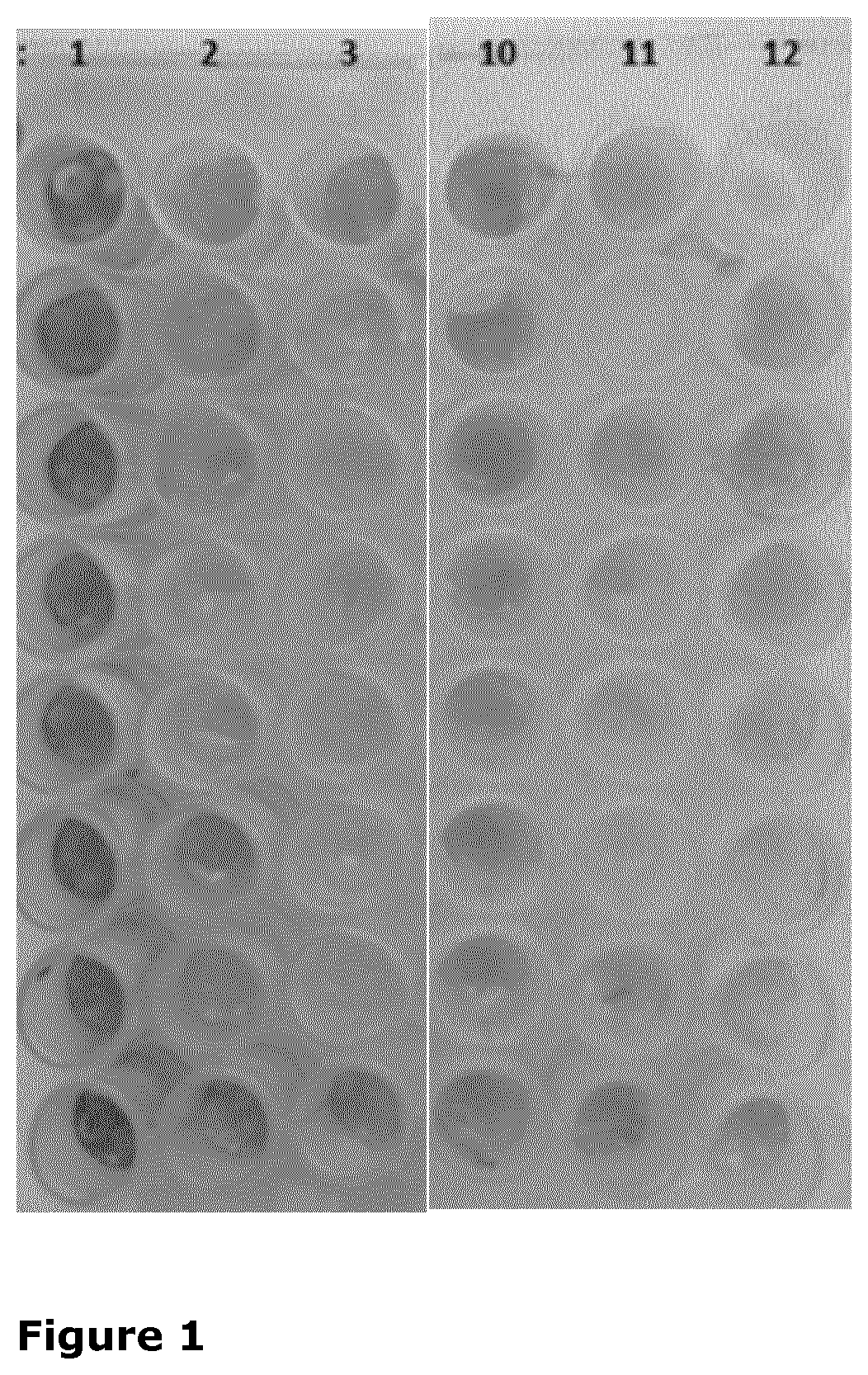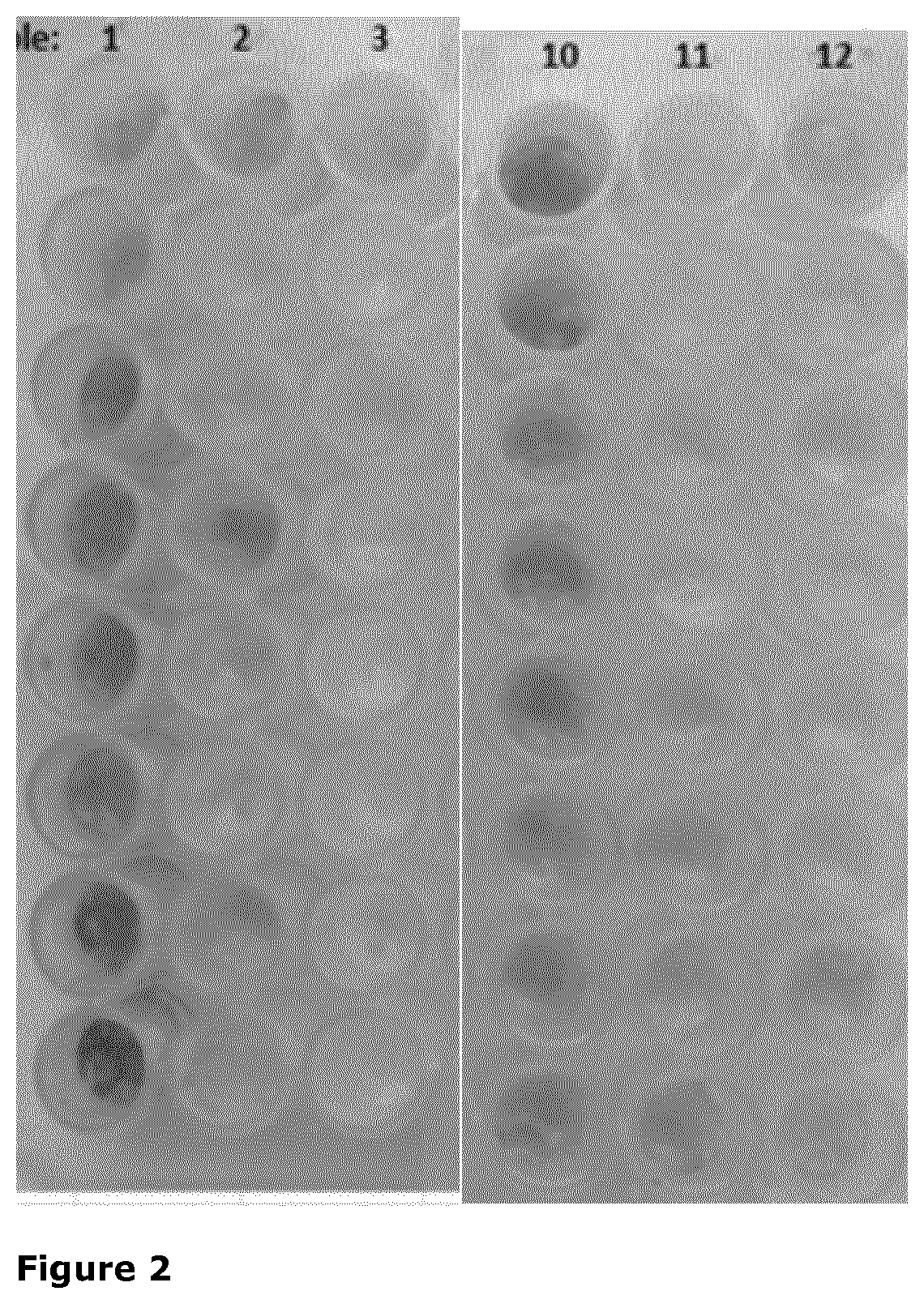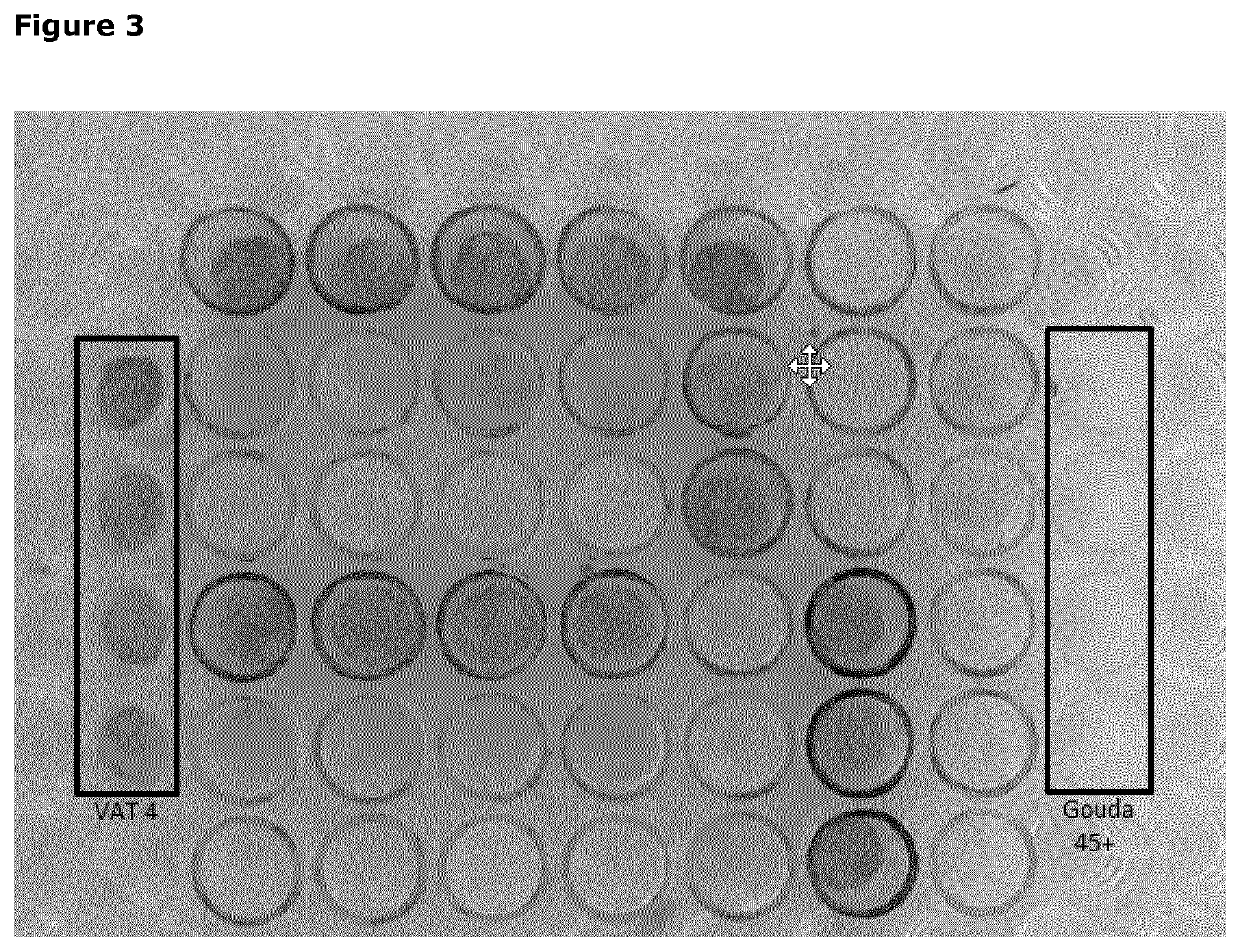Use of hexose oxidase and/or cellobiose oxidase for reduction of maillard reaction
- Summary
- Abstract
- Description
- Claims
- Application Information
AI Technical Summary
Benefits of technology
Problems solved by technology
Method used
Image
Examples
example 1
LactoYield (LOX) Experimental Data
[0096]Below is referred to that enzyme dosage was LOXU per g cheese. LOXU was determined according to the public available Product Information sheet for Lactoyield®, Chr. Hansen A / S Denmark; Version: 5 PI GLOB EN 02-24-2017. As discussed below in this Example were used around 0.01 0.02 LOXU / g.
[0097]In this experiment Lactoyield® was added to the surface of a shredded mozzarella cheese. A mozzarella cheese produced either using Hannilase XP (mucor pepsin XL-typw) or CHY-MAX M (camel chymosin) and the same culture was shredded and storage at −18° C. An amount of 5.0 g of cheese shreds was transferred to a 15 ml tube and added 0.5 ml Lactoyield® enzyme diluted in 0.05 M sodium acetate pH 5.2. Enzyme dosage was 0, 0.01 or 0.02 LOXU per g cheese. The tube was closed with an air tight lid, inverted for 20 min and stored at 5° C. After 14 days of storage the sample was analyzed for ability to brown and for galactose.
[0098]Browning was studied by placing si...
example 2
LactoYield (LOX) is More Heat Stable than HOX
[0100]An inherent step in production of pasta filata cheese is heat stretching of the curd. Here freshly made loaves of curd are subjected to hot water in a stretching process that serves to plasticize the curd. In the so called cooker curd stretched in water having temperatures up to e.g. 80-85° C. for holding times of 2-3 min. The treatment result in curd temperatures as high as 65-70° C. The activity of enzymes that are added cheese milk and retained in curd must be preserved during the entire process of cheese making. To assess the potential impact of a heat treatment of LOX, a buffered solution of the enzyme was heated to temperatures in the range 50-80° C. for various holding times from 5-30 min. The buffer employed was a 50 mM sodium acetate of pH 5.2, which is the target pH of mozzarella curd entering heat stretching. After heating the enzyme was placed on ice and activity was measured. The enzymes HOX (commercial available Danisc...
example 3
Addition of LactoYield (LOX) to Cheese Milk—Particles Best
[0102]Below is referred to enzyme “bound to particles”—the particles had a particle diameter (D(v,0.1)) distribution of at least 2 μm and a particle diameter (D(v,0.9)) distribution of less than 200 μm.
[0103]The particle was made of agarose (Workbeads WB40S)—D(v,0.5) of 40 μm.
[0104]A down scaled cheese model was made in 96 well plates employing a process simulating cheese making. Skim milk was added CaCl2 to 0.5 g / l, glucono deltalactoneglucone (GDL) to 0.9 g / l for chemical acidification and Ha-lactase to 5 NLU / ml for hydrolyzing lactose to glucose and galactose. Immediately after dissolving GDL, the milk was transferred to a 96 deep well plate with 1.25 ml in each well. The enzyme LactoYield (LOX) was added at different levels either as liquid enzyme or as bound to particles with particle diameter as given above. Catalase was added as liquid enzyme at different levels. Addition of LOX marked start of the experiment (t=0). Th...
PUM
 Login to View More
Login to View More Abstract
Description
Claims
Application Information
 Login to View More
Login to View More - R&D
- Intellectual Property
- Life Sciences
- Materials
- Tech Scout
- Unparalleled Data Quality
- Higher Quality Content
- 60% Fewer Hallucinations
Browse by: Latest US Patents, China's latest patents, Technical Efficacy Thesaurus, Application Domain, Technology Topic, Popular Technical Reports.
© 2025 PatSnap. All rights reserved.Legal|Privacy policy|Modern Slavery Act Transparency Statement|Sitemap|About US| Contact US: help@patsnap.com



